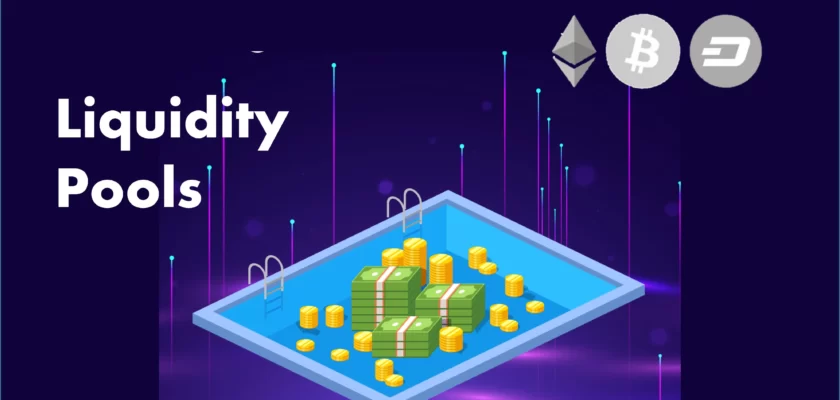A liquid asset is one that can be converted into cash or another asset easily. Even if you have the rarest, most valuable old book in your backpack, you will have a difficult time selling it if you are alone on a remote island.
As an alternative, if you were to buy $100 USD of BTC from Binance on the BTC/USDT pair, you would be able to do so almost immediately without any price impact. Liquidity is crucial when dealing with financial assets.
What is liquidity in Cryptocurrency & How to Measure it?
The liquidity of a financial asset refers to the ease of converting it into another financial asset without affecting its price. Liquidity, in simple terms, is the ease and speed with which an asset can be purchased or sold.
Good liquidity is the state of having the ability to buy and sell an asset quickly and easily without significantly affecting its price. Poor liquidity, on the other hand, is the inability to buy or sell an asset quickly. In either case, the transaction would have an impact on the price.
As a liquid asset, cash (or its equivalent) can be easily converted into other assets. A stablecoin is an asset similar to cryptocurrencies.
It’s only a matter of time until stablecoins and digital currencies become the standard for everyday payments. The market for cryptocurrencies is already heavily dominated by stablecoins, making them very liquid.
In contrast, real estate, exotic cars, and rare items may be considered relatively illiquid, since they can be difficult to buy or sell. If you own a rare artifact, you may have a hard time finding a buyer at a fair market price at which you consider the item to be worth.
What if you wanted to purchase a car with your artifact? It would be very difficult to find someone willing to exchange an artifact for a car you want to buy. Cash is the solution here.
The physical nature of tangible assets makes them less liquid than digital assets. The transaction may take a while to complete, and there are additional costs involved.
When it comes to digital exchanges and cryptocurrencies, buying and selling assets is a game of moving bits around in the computer. Clearing a transaction is relatively easy, which contributes to liquidity.
In light of this, liquid assets should be viewed as a spectrum. Stablecoins and cash are at one end of the spectrum. On the other hand, we have extremely illiquid assets like rare items. Assets are best thought of as falling on a specific part of this liquidity spectrum.
What are Liquidity Pools?
Decentralized exchanges and other DeFi platforms offer liquidity pools that allow users to buy and sell crypto without the need for centralized market makers.
There is a liquidity pool on a decentralized exchange (DEX) where cryptocurrencies or tokens are crowdsourced and locked up in a smart contract, which facilitates trading between the assets. Decentralized finance (DeFi) platforms use automated market makers (AMMs) instead of traditional markets to allow trading of digital assets in an automatic and permissionless way using liquidity pools.
What is the Role of Cryptocurrency Liquidity Pools in DeFi?
Decentralized exchanges (DEXs) rely on crypto liquidity pools, especially when it comes to decentralized finance (DeFi). Decentralized exchanges use liquidity pools to allow traders to swap currencies by pooling their assets. The DeFi ecosystem benefits from liquidity pools that provide speed, convenience, and liquidity.
DEXs on Ethereum faced a liquidity problem before automated market makers (AMMs) came along. There were fewer buyers and sellers at that time, so it was difficult to find enough people willing to trade regularly. DEXs at the time were a new technology with a complicated interface.
With AMMs, these problems of limited liquidity can be resolved by creating liquidity pools and offering third-party middlemen incentives to provide assets to these pools. In a decentralized exchange, the easier trading becomes the more assets and liquidity in the pool.
Read More – 6 Best NFT Wallets You Should Have Know
Are Crypto Liquidity Pools Important?
The potential downsides of entering a market with little liquidity are well known to any experienced trader in traditional or crypto markets. Slippage is a concern when entering, or exiting, any trade, regardless of whether it’s a low-cap cryptocurrency or penny stock. A slippage occurs when the price at which a trade is executed does not match the expected price.
The most common time for slippage to occur is during periods of high volatility, or when an order is executed at a price where there isn’t enough volume to maintain the bid-ask spread at the selected price.
According to the traditional order book model, the market order price is determined by the bid-ask spread of the order book for a specific trading pair during periods of high volatility or low volume. The price at which buyers are willing to purchase the asset is the middle point between the price at which sellers are willing to sell it. If the bid-ask spread for the asset at any given time is large, low liquidity may contribute to more slippage and the execution price may exceed the original market order price.
Users are incentivised to provide crypto liquidity for a share of trading fees through liquidity pools, which help solve the illiquidity problem. It is not necessary to match buyers and sellers when trading with liquidity pool protocols like Bancor or Uniswap. Users will be able to exchange their tokens and assets simply by providing them with liquidity that is transacted through smart contracts.
What is Yield Farming and Liquidity Pools?
Different protocols reward users with more tokens for supplying liquidity by providing more tokens for certain “incentivized” pools, creating a better trading experience. As a provider, you can gain the most LP tokens by participating in these incentivized liquidity pools. The purpose of liquidity mining is to maximize the earnings of crypto exchange liquidity providers on a specific market or platform.
DeFi markets, platforms, and incentive pools offer many different ways for users to earn rewards for providing and mining liquidity using LP tokens.
Having said that, how does a crypto liquidity provider decide where to invest their funds? A yield farmer does this. Using a blockchain protocol, yield farming involves staking or locking up cryptocurrencies in order to generate tokenized rewards. With yield farming, tokens can be staked or locked up in many DeFi applications to maximize earnings.
A crypto exchange liquidity provider can collect high returns on slightly higher risk by distributing their funds to the most incentivized trading pools that pay out the highest trading fees and LP token payouts across multiple platforms.
The user’s funds can automatically be invested in the highest-yielding asset pairs using this type of liquidity investing. Yearn.finance, for instance, automates balance risk choice and risk returns, enabling you to allocate your funds to various DeFi investments and provide liquidity.
Read More – What is NFT Farming & How Does it Work?

